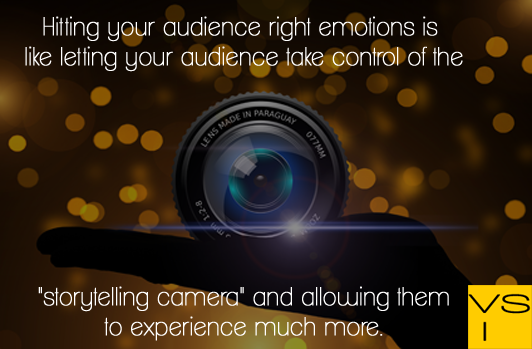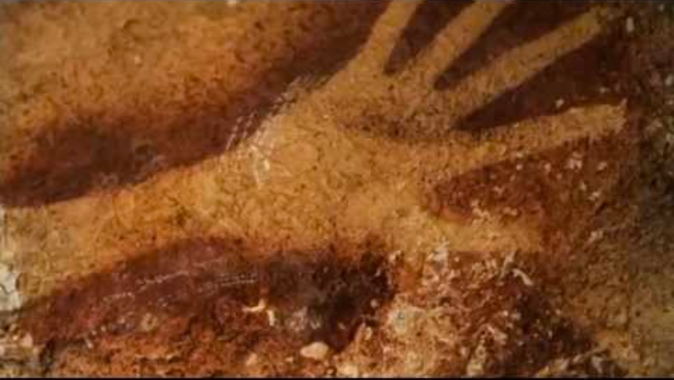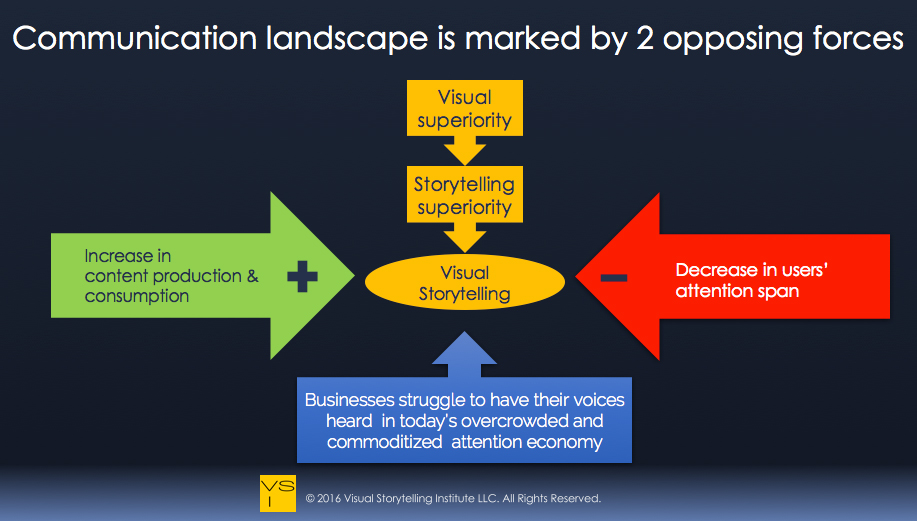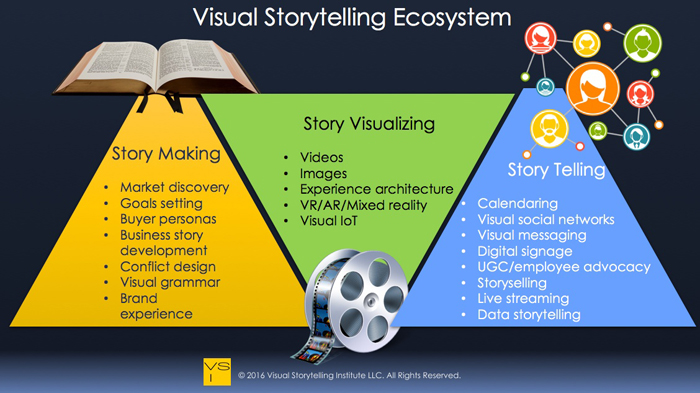September 28, 2016
The Role of Authenticity in Visual Storytelling

When you think about why authenticity plays such a critical role in delivering an impactful message, you can start by looking at the immediate meanings Merriam-Webster dictionary offers:
- Real or genuine: not copied or false
- True and accurate
- Made to be or look just like an original
What’s the first thing that comes to your mind looking at these definitions? If you said fake, phony, artificial – you’re on the right track. These are all adjectives that describe authenticity by using different categories of being untrue.
Authenticity in visual storytelling is one of the most loaded subjects you could imagine visual storytellers are grappling with today. Why? Think back about a recent movie, video clip you watched, or an image that moved you. What was the narrative element that triggered your emotions?
The magic typically happens when the visual story carries a good dose of vulnerability or imperfection that allows the audience to see the human aspects of your narrative and this way develop empathy and trust towards your message. A great example is Unilever’s seminal ‘Dove Real Beauty Sketches’ Viral Campaign of 2013:
This commercial garnered over 130M views and has several success ingredients at play here:
- Customer as the hero: Making the customer the hero of the story so you’re watching real stories by real people from their point of view, not the brand.
- Story duality: The story takes it one step further by revealing that the story people tell themselves about how they look is completely opposite to how other people see them. This is a great lesson for what I call the “double mirror effect.” The better the story you tell yourself, the better it makes you feel and then this effect spills outside to your external relationships and make your message more impactful.
- Make it relatable: By exposing the customer vulnerability/weakness and the element of surprise when contrasting with other people’s views, this helps show customers’ humanity, and trigger empathy.
- Make it believable: Once your story is able to generate empathy, it pushes viewers’ guards down (hey this is a commercial!), they start to identify with the message, see themselves in the story and this way help them trust the narrative core message.
- Bigger purpose: Throughout the video clip you don’t find even one mention or visual plug of the Dove product. Unilever identified a conceptual gap that is much larger than singing the attributes of their Dove soap. Their big WHY? Is really anchored on a simple message of “You’re more beautiful than you think.”
- Empowerment marketing: Unlike inadequacy marketing that uses fear to stage a need for a product, this video is all about human empowerment.

With Cisco projecting that 70% of the world mobile data by 2020 will be video, it has become imperative for marketers to figure out how to create effective video storytelling that will create that sought-after authentic brand experience to move audiences to action.
Ready to unlock the power of visual storytelling and boost your marketing results? Schedule a conversation with the Visual Storytelling Institute about your Visual Storytelling Workshop today!
This post originally appeared at Visual Storytelling Institute.
Source: Visual Storytelling
September 8, 2016
What is Visual Storytelling?
I am talking to a lot of folks these days about visual storytelling, and from these interactions, I learn that there is still a great deal of ambiguity about what is visual storytelling and why it’s important now for marketers? If you’re clueless too, don’t feel bad, some of the top dictionaries like Merriam-Webster and Oxford have no clue either:
Merriam-Webster:
Words fail us
Sorry, the word you’re looking for can’t be found in the dictionary.
Oxford:
No exact match found for “”visual storytelling”” in US English
When I figured, hey maybe these are old fashioned resources, let’s try Wikipedia, I received:
Visual narrative
A visual narrative (also visual storytelling) is a story told primarily through the use of visual media. The story may be told using still photography, illustration, or video, and can be enhanced with graphics, music, voice and other audio.
Getting warmer! The reality is that the term “Visual Storytelling” is pretty new. Looking at Google Trends, for the past 12 years the term garnered low counts of under 100 searches a month, and it’s only in the past 3 years that the term is experiencing a growth, albeit still modest.

Looking closer at these searches, we find that the term “Visual Storytelling” is largely associated with topics covering the visual arts targeting artists/designers: photography, media, illustration, and infographics.

Even though the traditional meaning of visual storytelling has been with us since the first man figured hey, I could create a stencil by blowing paint on my hand held to the wall to express how my day went. Sweet!
 Sulawesi Cave in Indonesia is the world’s first cave paintings 35,000 years ago.
Sulawesi Cave in Indonesia is the world’s first cave paintings 35,000 years ago.
BTW Text was invented only 32,00 years later!
After which, came the animal hunt stories – all the way to today’s visual arts such as photography, picture books, comics, video games, Instagram, Snapchat, Hollywood 3D movies and Virtual Reality.
In line with the term direct affinity with the entertainment industry, when I searched for “Visual Storytelling” definition the first result Google offered in their high-attention summary snippet was from EICAR – The International Film & Television School Paris:

It seems quite obvious that the term “visual storytelling” is quite new for both visual arts and more so in the context of marketing, so users have no reason to search for it just yet – think “content marketing” circa 2005. However, switching our camera lens to the marketing space in 2016, we find that marketers have realized that the benefits that rode visual storytelling in the entertainment space to new heights, also make a lot of sense when driving business impact with jaded audiences, overwhelmed by tons of copy cats content plays.
To paint the picture in broader strokes, we see that the communications landscape today is strongly marked by 2 opposing forces:

1) Content explosion: a dramatic and continual increase in content production,
> “4.6 billion pieces of content are produced every day” – LinkedIn
and content consumption is further enabled by greater broadband and mobile access
> 70% of the world mobile data traffic will be video by 2020” – Cisco
VERSUS
2) Decreased user attention span: a marked and well-documented downshift in focus
> The average human attention span is down to 8 seconds -Microsoft
We recognize 2 core drivers that support effective visual storytelling:
1. Our human brain processes visuals much faster than text
> “Visuals are processed 60,000 times faster than text by the human brain and 90% of information transmitted to the brain is visual” -3M
2. The human brain prefers information packaged as stories
> “92% of consumers want brands to make their ads feel like stories. -OneSpot
So what is the definition of visual storytelling
in the context of marketing?
Visual Storytelling is a marketing strategy that involves 3 conditions: 1) communicating ideas through 3-act story structure 2) placing your customer at the heart of the story and 3) delivering your story through immersive visual media – in order to create profitable customer engagements.”
– Shlomi Ron
That means that in order to cut through the clutter and resonate with your audience, as a marketer you need to put your audience as the hero of your story, addressing first their needs – not yours. Why? As Rolf Jensen aptly states, we’re entering the emotion-oriented “dream society” where customers take for granted the functionality of products and make purchase decisions based upon to what degree they believe a product will give them positive experiences (source: Storytelling Advertising – a Visual Marketing Analysis by Sarah Elise Väre).
Experience is key.
And companies that sell experiences, rather than product/service functions are poised to be rewarded with audience attention. A great example is Apple. Some of us own iPhone 6 devices that work perfectly fine, but regardless we gotta have the new iPhone 7, even with its marginal upgrade benefits. It’s that unique experience that the Apple story enables.
If you check Wikipedia under Storytelling, there is a whole section devoted to storytelling in business and marketing. Marketers use storytelling techniques because humans have an ingrained need to be entertained than being clobbered by dry product speeds and feeds.
With all the hype surrounding virtual reality (VR) these days, marketers need to mentally put on VR goggles and see the world through their customer’s eyes. It’s about introducing authentic narrative elements to illustrate a meaningful challenge your audience is facing and how you – as the brand marketer – can help them solve it with outcomes impacting both the business and personal levels.
Storytelling strategist, Kathy Klotz-Guest also suggests that such meaningful resolutions also need to carry social change that affects the environment, causes that are bigger than rational business results – the currency Millenials respond to the most. Warby Parker with their Buy a pair give a pair campaign or Patagonia that supports the environment – are good examples.
The magic happens only when your business story carries a good dose of vulnerability or imperfection that allows your audience to see the human aspects of your narrative and this way develop trust and empathy towards your message (i.e., mirroring themselves in your story). Why? Research suggests that when we read stories packed with distinct feelings, colors or odors, the same region in our brain is activated as if we would smell that particular odor or experience that feeling in real life.
How does the visual storytelling ecosystem look like?

*Note: Behind each of the items listed above, there are complete sub-industries that offer either on-demand visual content management platforms or agency-side consulting.
Ready to unlock the power of visual storytelling and boost your marketing results? Schedule a conversation about your Visual Storytelling Workshop or one-on-one coaching today!
Source: Visual Storytelling